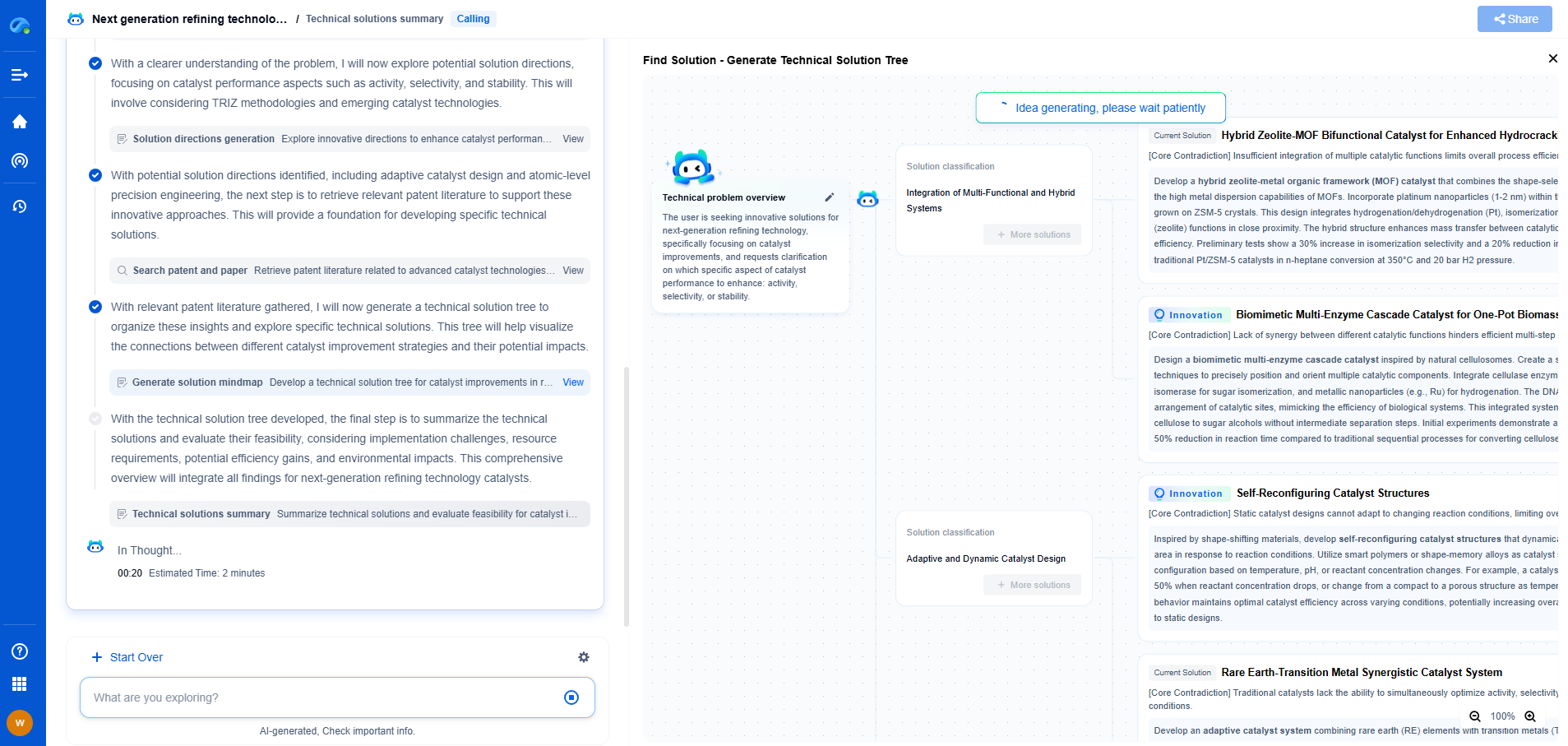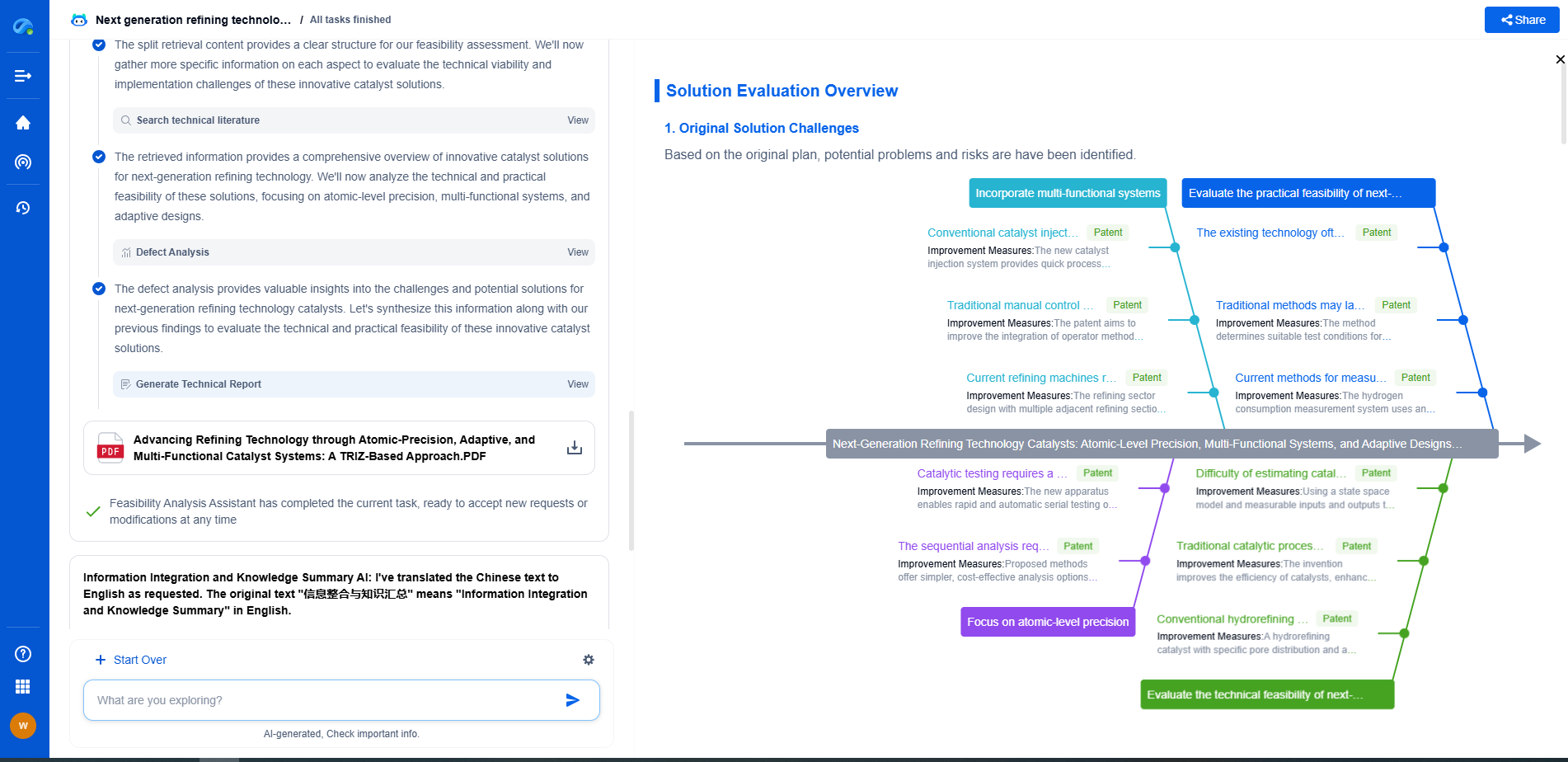Renewable Energy: Power Metering for Solar Inverter Efficiency Testing
JUL 9, 2025 |
As renewable energy becomes a cornerstone of the global effort to reduce carbon emissions and combat climate change, solar power has taken a leading role. Central to the effective utilization of solar energy is the solar inverter, a device that converts the direct current (DC) generated by solar panels into alternating current (AC) used by home appliances and the electrical grid. However, the efficiency of these inverters can greatly influence the overall performance and economic viability of a solar power system. Therefore, testing and verifying their efficiency through power metering is crucial.
**The Role of Power Metering in Solar Energy Systems**
Power metering is the process of measuring the electrical power going into and coming out of a solar inverter. By capturing this data, users can determine how effectively their solar panels are operating and how much energy is lost during conversion. This is vital for optimizing energy use, understanding system performance, and identifying any malfunctions or inefficiencies.
**Components and Functionality of Power Meters**
Power meters for solar systems consist of several components designed to provide accurate measurements. They generally include sensors to measure voltage and current, data loggers to record the information, and display units to show real-time data. Advanced meters may also feature connectivity options to transmit data to remote monitoring systems for detailed analysis.
The functionality of a power meter hinges on its ability to sample voltage and current readings at high frequencies and calculate the power by interpolating these values. The resultant data can then be used to refine system operation and improve inverter efficiency.
**Testing Solar Inverter Efficiency**
Testing the efficiency of a solar inverter involves several key steps:
1. **Installation of the Power Meter**: The power meter must be installed correctly to measure both the input (DC) from the solar panels and the output (AC) to the electrical grid or load. This setup allows for a comprehensive assessment of the inverter's performance.
2. **Data Collection and Analysis**: Once installed, the power meter continuously collects data. By analyzing this data, users can determine the conversion efficiency of the inverter. Regular monitoring helps in identifying trends and diagnosing potential issues such as shading effects, component degradation, or installation errors.
3. **Efficiency Calculation**: Efficiency is calculated by dividing the AC output power by the DC input power and multiplying by 100 to get a percentage. This value indicates how well the inverter converts DC to AC power under specific conditions.
4. **Optimization**: Based on the efficiency data, adjustments can be made to improve system performance. This can include repositioning panels, cleaning them regularly, or even upgrading the inverter if necessary.
**Benefits of Power Metering in Solar Systems**
Power metering not only helps in testing inverter efficiency but also offers several broader advantages:
- **Enhanced System Performance**: By understanding where energy losses occur, system operators can make informed decisions to enhance overall performance.
- **Cost Savings**: Improved efficiency translates into reduced energy waste, which can lead to significant cost savings over time.
- **Prolonged Equipment Lifespan**: Monitoring can help identify issues before they lead to equipment failure, thereby extending the lifespan of the system components.
- **Informed Maintenance and Upgrades**: With detailed performance data, maintenance can be more targeted, and decisions about upgrades or replacements can be made with confidence.
**Conclusion**
As the world continues to shift towards renewable energy sources, the efficiency of solar inverters becomes increasingly important. Power metering is an essential tool in ensuring these devices operate at their maximum potential. By investing in accurate and reliable power metering solutions, solar system owners can optimize their energy output, reduce costs, and contribute to a more sustainable future. The continuous evolution of metering technologies promises even greater insights and efficiencies in the years to come, further solidifying solar energy's role in global energy strategies.
Navigating the evolving world of electrical measurement—from high-precision signal integrity to advanced test protocols like BERT or TDR—demands more than just expertise; it demands smart tools.
Patsnap Eureka empowers you to keep up—by turning complex patent data, technical parameters, and industry signals into actionable insight. It’s your AI partner for exploring what’s next in test, measurement, and electrical diagnostics.
💡 Try Patsnap Eureka for free and see how it transforms the way you work with electrical measurement technologies.
- R&D
- Intellectual Property
- Life Sciences
- Materials
- Tech Scout
- Unparalleled Data Quality
- Higher Quality Content
- 60% Fewer Hallucinations
Browse by: Latest US Patents, China's latest patents, Technical Efficacy Thesaurus, Application Domain, Technology Topic, Popular Technical Reports.
© 2025 PatSnap. All rights reserved.Legal|Privacy policy|Modern Slavery Act Transparency Statement|Sitemap|About US| Contact US: help@patsnap.com

